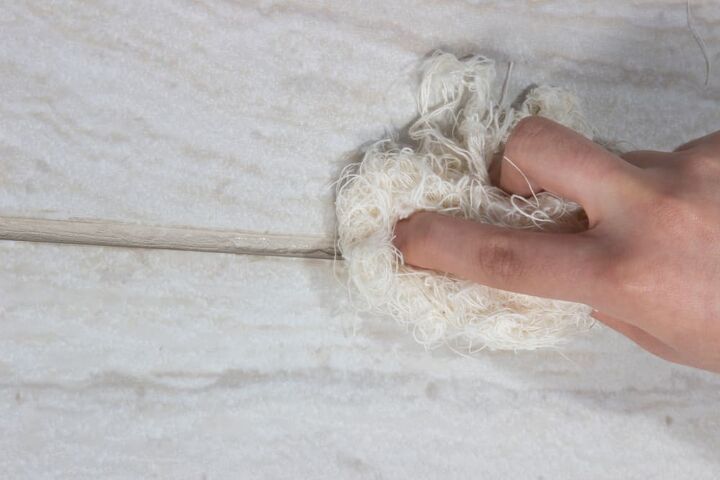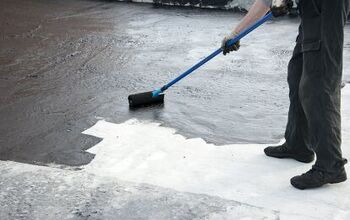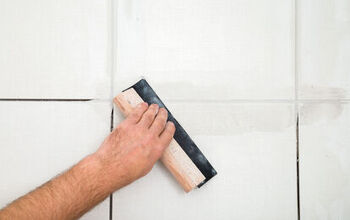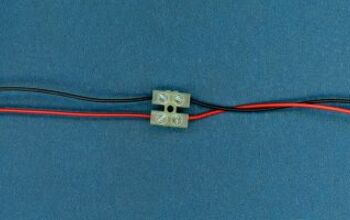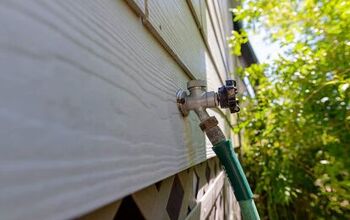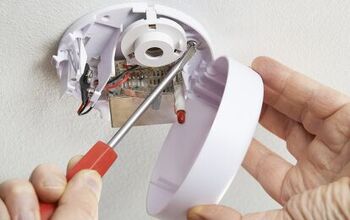Is It Really Necessary to Seal Grout? (Find Out Now!)

If you have tile in your bathroom or kitchen, it can be very susceptible to water damage, bacteria, and mold. Because of this, you will want to seal the grout that holds that tile together. This will help the tile stay waterproof and keep your home mold-free.
Tile that is regularly exposed to water must have its grout sealed. Grout sealer is usually made of mineral oil or beeswax to ensure that it is water-resistant. Keeping your grout sealer in good condition will in turn keep your tile in good condition for years to come.
In this article, we have covered why it is necessary to seal grout, especially in high-moisture areas. By properly applying and maintaining grout sealer, you can rest assured that your shower isn’t growing mold or other bacteria.
Do You Need Grout Replacement or Repair?
Get free, zero-commitment quotes from pro contractors near you.

What Does Grout Sealer Do?
The grout on your tile is meant to act as a solid adhesive and keep the tiles in place. However, grout is not watertight and will let moisture in if it is exposed to it. This is why you must use a grout sealer to make the seams waterproof.
Grout is meant to be slightly porous in order to let water in but also to let it out. However, sometimes water does not fully evaporate from underneath the tile. This is what leads to things like mold growth and water damage.
To stop the possibility of this happening, grout should be sealed with a specialized grout sealer. This will ensure that water never makes it into the pores of the tile in the first place. By using a grout sealer, you don’t have to worry about whether or not your grout is porous enough.
What Can Happen If I Don’t Use Grout Sealer?
Grout tends to be very brittle and easily breakable over a period of time. This is especially true if you live in an area that has a dry climate. A dry climate can cause your grout to dry early and become more breakable.
You need to seal grout because it is not waterproof on its own. Because of this, it is especially important in rooms like the bathroom or the kitchen. Water and other liquids either get spilled or intentionally fall on the tile, which can lead to water damage if not sealed.
Mold is a huge problem in active, high moisture rooms. It can lead to all kinds of health issues and structural damage to your home. If you don’t use grout sealer, mold will grow much more easily and in greater abundance.
Does All Grout Need to Be Sealed?
Most grout that your typical homeowner will come across needs to be sealed in order to be waterproof. It is always best to err on the side of caution especially when it comes to water damage. Tile can start to decompose underneath before you see it externally.
However, there are exceptions to this rule. Epoxy grout does not have the same porous nature as cement-based grout. It will act as a sealer as you apply it and will not allow water underneath the tiles like standard grout will.
There are also certain rooms where tiles will not need to be protected by grout sealer. If you have, for example, a tile pattern on a wall that never gets wet, you will not have to seal that grout. If you are certain that it is not susceptible to moisture, you shouldn’t have a problem.
Can I Seal Grout Myself?
The good news about needing to seal your grout is that it is fairly easy to do. Most grout sealing jobs can be done in an afternoon and don’t require much prior know-how. As long as you follow the proper steps, you can do this job yourself.
Start by choosing a grout sealer that has an applicator already. Some grout sealers come in large jugs and must be put into some kind of applicator. For most DIY grout sealing jobs, you will not need to buy it in bulk like this.
How to Seal Grout
To seal your grout, work from left to right and from top to bottom. This will ensure that you are not missing any seams and that you completely seal the area. It will also make the job go quicker if you approach it methodically like this.
As you are applying the sealer to your grout lines, keep a sponge or towel handy. As you work, wipe off any excess grout sealer that makes its way onto the tiles. Excess sealer can create cracks and openings that could allow water underneath the tile.
How Many Coats of Grout Sealer Is Needed?
You will need to apply two coats of sealer to ensure the best possible seal. No matter how diligently you apply the first coat, there will always be a few small spots that you miss. The second coat will cover your bases and keep any holes from forming.
When applying the first coat, be sure to leave room for the second. Do not fill the grout lines completely with the first coat of sealer. This will give the first coat room to soak into the pores and the second coat room to seal the top.
After applying the first coat, let it dry for at least an hour. You need to seal grout in such a way that it repels any liquid. If you do not let the first coat dry all the way, it will absorb liquid instead. This is how you end up with water damaged tile that must be replaced.
How Often Should I Seal Grout?
If you have a tiled area that sees a lot of moisture, you are going to want to seal the grout once every 6 months. This will ensure that water does not break down the grout sealer and cause it to fail. For areas that are low moisture, you should seal the grout once a year.
Before you reseal the grout in your tile, remove the old grout sealer as much as you can. Use a small, flat putty knife to gently pull out the old grout sealer. This will give you enough space to put the fresh sealer in and get the most watertight application.
How Do I Know if My Grout Is Sealed?
Whether you’ve just moved into a new home or you want to check on your grout sealing job, you can do a test to determine how watertight your grout is. It is recommended that you perform this test frequently to be certain that water isn’t making its way under the tile.
To test your grout sealer, splash a couple of water droplets onto your tile surface. Watch the grout lines and see how the water behaves. If it beads up, you have a tight grout seal. However, if it soaks into the grout, you need to reseal it and test it again.
One of the reasons that grout sealer might not repel water is that it wasn’t properly cured. When applying grout sealer, be sure to let it dry for at least 48 hours before getting any moisture on it. This will keep its structural and molecular integrity intact and give you the best possible seal.
Do You Need Grout Replacement or Repair?
Get free, zero-commitment quotes from pro contractors near you.

Related Questions
Why is my grout cracking?
One of the reasons why your grout may be cracking or crumbling is that it was not properly mixed. When mixing grout, always be sure to follow the instructions and add the proper mixture of water and cement. By doing this, the grout will have the best chance of staying together.
Can you grout and seal on the same day?
It is not recommended that you seal your grout on the same day that you apply it. You should wait at least 72 hours before adding sealant to new tile grout. This will give the grout plenty of time to cure and give the sealer a solid surface to adhere to.
Does vinegar remove grout sealer?
Vinegar is an incredibly useful thing to keep around the house. It can help break down grout sealer and make it easier to remove in the event of a reapplication. Apply the vinegar to the grout lines and let it sit for an hour. Then, remove the loosened sealer with a putty knife.

I am a writer and editor from The Bay Area, CA. When I'm not typing, I enjoy hiking, woodworking and gardening. I love sharing tips and discovering new trends in home improvement.
More by Michael Oconnor



